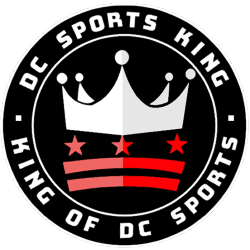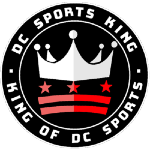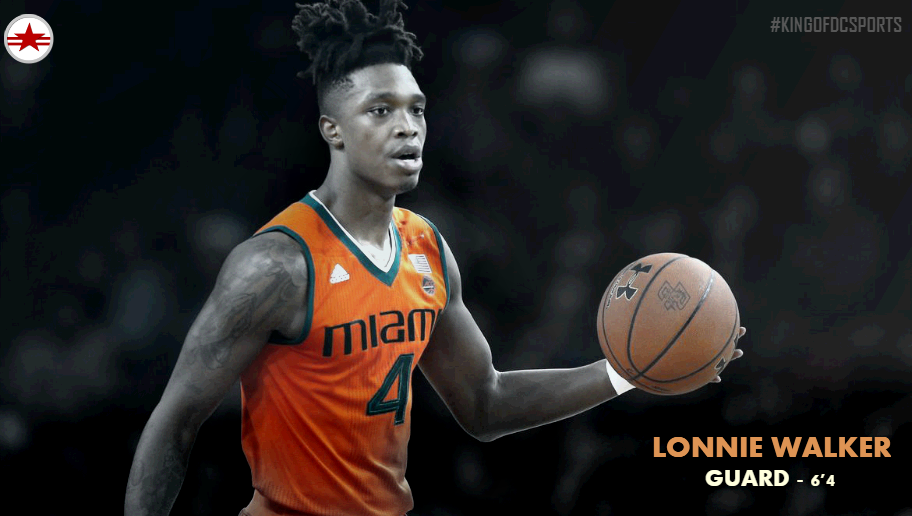
For the first time since 2015, the Washington Wizards enter Thursday’s 2018 NBA Draft with a first-round pick. That year they selected Jerian Grant 19th overall before trading his rights to the Atlanta Hawks in return for the rights to Kelly Oubre Jr., the 15th overall pick. This year, the Wizards sit at the No. 15th pick and history has shown that they could potentially grab a franchise-altering talent whether on the level of Oubre or a Kawhi Leonard.
With that said, longtime general manager Ernie Grunfeld will be challenged to grab a talent that may need to fit in right away with a major impact while keeping together the team’s long-term foundation in tow. Superstar and leader John Wall challenged the front office to improve the roster this off-season in hopes of competing for an Eastern Conference title at the very least.
Unfortunately, the Wizards have a great deal of restraints within their salary cap with the three max contracts of Wall, Bradley Beal and Otto Porter Jr., in addition to hefty deals for supporting cast members, Marcin Gortat and Ian Mahinmi, whom both are under-performing and undesirable assets. Washington enters the off-season with quite a bit of needs, such as an athletic big, more perimeter shooting, someone who can create his own shot besides Wall, and a combo guard that can serve as a scorer as well as a complement piece to Wall and Beal depending on the rotation.
Where the Wizards currently stand in the draft order will allow them to address one of those needs. Which one depends on how the draft shapes out in the prior 14 picks before their selection. Athletic big certainly should be at the top of their list, but Washington’s inept depth over the course of the past four seasons along with their continued search for a suitable backup to Wall and/or Beal are just as high.
Let’s examine the five best options the Wizards will realistically have sitting at No. 15.
Long Shots
Kevin Knox: A month ago, Knox would have been listed in these rankings, and very much would likely have been No. 1, however after workouts teams picking in the middle of the first round have general thinking the forward will not be available after the 11th pick.
“We’ve had Knox sliding to the Nos. 12-15 range the past few months after an up-and-down freshman season,” Jonathan Givony of ESPN.com wrote. “NBA teams drafting in that range say they don’t anticipate him being there, as there seems to be a significant market for his services in the Nos. 7-11 range.”
If Knox happens to slide, it will be Kawhi Leonard all over again and would be a great add by Washington for an immediate impact. He also protects the team in regards of the eventual loss of Oubre next summer. Knox is developing his perimeter skill set and with his size and strength can play inside and an out like Marcus Morris of the Boston Celtics with better shooting and ball-handling skills. Unfortunately, it’s a long shot, and one that Washington would be elated to see available by the 15th pick.
Michael Porter Jr: Initially there was no hope Porter would be available at the No. 15 pick, and there still is much doubt. However, the concerns of his overall health among teams may vary and could have a slim chance of causing him to slide in the draft. Sliding to No. 15 is still a stretch, but recently during an ESPN studio mock draft, their NBA analysts that includes the famed Adrian Wojnarowksi had Porter sliding down to the Wizards at No. 15.
Like Knox, the chances are very slim for Porter to fall. A recent report that the Memphis Grizzlies, who hold the No. 4 pick, are strongly considering Porter. The thinking is Porter should be a top-8 pick despite the health concerns stemming from his back surgery last year. If he happens to slide beyond ninth, there could a legit fall that may make him available at 15th for the Wizards.
5. Zhaire Smith, Guard, Texas Tech
Following the NBA Draft Combine, Smith came across as the most explosive player in this year’s draft class. Despite being undersized for a wing player at 6-foot-4, he has a 6-foot-10 wingspan. His athleticism and ability to explode and jump is off the charts. His explosion with the ball to get pass defenders is elite. Watching film, he looks similar to Zach Levine with his ability to attack the basket.
He also has all the traits to be a good shooter from the perimeter. Although at a low volume, Smith shot 45.0 percent from three-point range in his one year at Texas Tech. He also shot 57.4 percent on two-point field goals. He has potential of becoming a great spacer with his superb mixture of attacking the paint and jumpers with a great shot selection. Washington needs a backup guard in any form honestly. Jodie Meeks isn’t exactly ideal fit for the Wizards. He struggled on both ends of the floor and was not quite what Scott Brooks needed from a backup two-guard, last season.
In addition to his raw offensive skill sets, Smith can defend at an elite rate. He has the length, speed, and footwork to hold guards and bang with some wings. He is also an exceptional switcher on defense because of his ability to defend one through three. That’s something that Washington has not had beyond Wall and Beal for quite some time. He averaged seven rebounds per 40 minutes and posted an offensive rating of 128.7 and defensive rating of 95.1, according to Sports-Reference.
His weaknesses start with him not being a volume shooter, averaging 7.5 shots per game. He rarely was asked to create his own shot. His handles are average and eliminates him from being the combo guard that may be ideal for the Wizards. He will need to play off the ball, at least through his first year. Brooks is known as one of the best developers with young talent, so there is room for Smith to work on his struggles. Him being on the floor with Wall would be no issue but playing with the second unit or with Beal at the point may create the same issues the Wizards’ bench had before.
If he expands his game by improving his handles and showing he can create off the dribble, and proves naysayers wrong on his volume of shots, Smith could be a solid long-term answer to depth in the Wizards backcourt.
4. Robert Williams, Center, Texas A&M
The 6-foot-10 big, certainly fits the athletic big that Wall alluded to during his exit interview. With a wingspan of nearly 7-foot-6 and his aggressiveness gives you an upgrade over the current Wizards’ options of Gortat and Mahinmi. Williams is an elite defender and rim protector. He showed the ability to understand how to hold and switch off the pick-and-roll, something that Gortat has struggled with for the longest.
Williams is drawing comparisons to DeAndre Jordan of the Los Angeles Clippers. They are similar in nearly every aspect of their games, good and bad. Williams gives Wall a great option to lob and dump to in the post. Williams also can play off the pick-and-roll offensively. He posted an offensive rating of 113.8 and defensive rating of 90.2 last season as a sophomore. In two seasons at Texas A&M, he shot 62.4 percent from the field with majority of his shots coming inside the paint. Williams posted 16.2 points and 14.4 rebounds per 40 minutes in his last season with the Aggies.
Just thinking of how he potentially makes an immediate impact could make him the best option for the Wizards, however, he could easily not be available. The Clippers will be key to whether he is available at No. 15. They hold both the 12th and 13th picks in the first round, le
aving them the option of grabbing the best available player at either pick and going with Williams at the other. The comparisons of Jordan play in favor of him going to the Clippers, as Jordan could be gone in free agency in the summer of 2019. Also, his similar ceiling to Jordan could also give the Clippers reasons to pass on him.
The concerns for Williams is that similar ceiling of Jordan, however, Wizards fans have long clamored to the idea of having Jordan over Gortat. Now, presents a chance to get a younger Jordan to replace Gortat, who also will be free agent in 2019. Williams also can be an offensive liability given the evolution of the center position and his raw offensive skill set. He has the potential to step out to shoot, but right now he has a ways to go.
He is also just as terrible at the free-throw line as Jordan. Last season, Williams shot 47.1 percent from the charity stripe, eliminating him from late-game situations due to his liability at the line. He also struggles to cover step-out centers an area that Gortat and Mahinmi struggle at, as do many post-centers do. Stretching out the defense could pose similar issues as it does with Gortat, leaving Washington to rely on Morris at the five more than they may like. The athleticism still gives an upgrade for the Wizards, depending on how the draft plays out Williams could still be a solid option.
3. Mitchell Robinson, Center, N/A
Robinson has great height at 7-foot-1 and developing frame of 233 pounds. His wingspan is 7-foot-4. He is the most puzzling and intriguing prospect in the draft his year. Regarded as a top-10 prospect, Robinson dazzled at the Jordan and McDonald’s Classics and eventually committed to Western Kentucky. However, he abruptly left the school last July only to return but leave the school altogether in September, forgoing college in preparation for this week’s draft.
No question, there are red flags. His decision to pick the Hilltoppers over elite basketball programs was puzzling and his second-guessing that led to him not playing at all in 2017-18 just adds to the negatives. He also withdrew from last month’s Draft Combine. Still, he poses as a better option than Williams and Bates-Diop, if he irons out whatever wrinkles that may have led to his strange 2017-18.
Robinson is the athletic big the Wizards need. In his last actions, he displayed the ability to be a rim protector. He also has quick feet and can move on the fly, more so than Williams. His ability to get up the floor is perfect for the speedy Wall and Beal. He finishes with authority and shows more potential shooting stepping out than Williams. Robinson’s release is smooth for a big, and while he needs improvement facing up, he gives Washington a much-needed upgrade.
Robinson also has the skill set and physical attributes to be a better step-out defender than Gortat has been and Williams. His footwork and speed allow him to locate and close out on shooters, allowing him to follow today’s modern bigs who can shoot outside the paint. With that agility he has the potential to switch on and hold the perimeter off screens.
The concerns beyond character starts with the unknown of him being out of basketball the past year. A year in college would have allowed him the ability to learn the game more. He is also foul prone because he is still raw on both ends of the floor — another weakness that could have been worked on in college or playing overseas. His free-throw shooting is also a concern but is not on the levels of a DeAndre Jordan or Williams.
Again, how great of a prospect he is depends on how teams evaluate the red flags on Robinson and could go a long way into if the Wizards have him high as an option at No. 15.
2. Keita Bates-Diop, Forward, Ohio State
The 2018 Big Ten Player of the Year would give the Wizards a much-needed presence in the post and on the wing. If the Wizards are intent to join the rest of the NBA’s elite in the position-less era, Bates-Diop provides everything you need. He can play on the wing and has the size at 6-foot-8.5, 224 pounds, and a wingspan of 7-foot-3 to play some stretch-four.
Bates-Diop was a late bloomer in college, but so was Kawhi Leonard, right? Bates-Diop averaged an impressive 19.8 points per game (23.9 per 40 minutes) and shot 35.2 percent from three as a redshirt junior. He led the Buckeyes to a second-place finish in the Big Ten last year. His maturation can add to Brooks’ rotation, especially when the Wizards go small. Bates-Diop and Markieff Morris on the floor together can pose some challenges for opposing defenses, especially when you have a Wall breaking down the defense. A two-way player, Bates-Diop pulled an offensive-rating of 116.8 per 100 possessions, according to Sports-Reference and a defensive-rating of 94.6.
Lack of elite handles are concerning for Bates-Diop. While he addresses the perimeter shooting and helps the front court get more athletic, his inability to create his own shot leaves the Wizards still relying on Wall’s play-making. And with a bench without a true creator at the point, Bates-Diop is like having another Morris on the floor. However, that may not be such a bad thing. What highlights the Wizards’ inability to create is their lack of creativity on the wing and post, the Morris position, off the bench.
Besides, Brooks can develop young players and him and his staff will certainly focus on Bates-Diop’s handles. With a John Wall, everyone seemingly improves their shooting, and Bates-Diop at the very least is another option for Wall with spacing. While he is not a superb and polished as maybe the others on this list, Bates-Diop could very well be the steal of the NBA Draft.
1. Lonnie Walker, Guard, Miami (FL)
Depending on what mock draft one reads, Walker can land anywhere from No. 10-15. It may be in the Wizards’ best interest if he slides to them at No. 15. Walker has all the tools to be a stud much like the 2017 draft class sensation Donovan Mitchell of the Utah Jazz. Walker entered University of Miami (FL) as one of the top shooting guards in his high school class. Unfortunately, a meniscus tear in his right knee hampered his one year in college and hurt his draft stock, dropping him as arguably the top guard to being on the brink of the lottery.
Still, he displayed the same potential he did in high school coming out of Reading, Pa. Walker solves the Wizards’ needs of a combo guard and one who can create his own shot. At 6-foot-4 and with a wingspan of 6-foot-10, he has the ideal size for a guard position. His handles can improve, but they are light years ahead of Zhaire Smith. Walker also has a great shooting range and motion that is better than the 34.6 percent he shot at Miami from beyond the arc.
That 34.6 percent does not represent how great of a shooter he is developing into. In comparison, Walker shot slightly better than Beal (33.9) from three. Ironically, the two had similar numbers in their one-and-done years of college with Beal averaging 0.6 points, 0.1 assists, and 0.2 steals per 40 minutes.
Walker keeps defenders on their heels with his ability to knock down jumpers and blow by defenders off the dribble. He knows how to roll off a screen and knock down pull-up jumpers. He can break down defenses with the ball in his hands and attacks the rim better than any other guard in the lottery. He also can spot-up due to his fluid shooting motion. Putting him in an iso situation would be torture for a defense. His versatility on offense would allow him to be the spark off the bench Washington has long yearned for. He can also log bulk minutes playing next to either Wall or Beal playing on and off the ball.
Walker has his short comings. For instance, his decision-making and vision with the ball in his hands almost completely eliminates his ability to create for others. Putting the ball in his hands would be very Beal-like, except Walker has fluid hips and can dribble through the defense. Walker is still learning how to defend, which is disappointing given his physical attributes. He can get lost at times on defense. He is not as disruptive as his frame dictates. His weaknesses are illustrated through his 109.4 offensive rating and 102.9 defensive rating.
The upside is that his defensive I.Q. will match his attributes. If it does, he can be one of the better two-way players in the NBA. At worst, he would be a 3-and-D guy. A disappointing season at Miami hurt him and teammate Bruce Brown, but scouts picking from 10-16 are not going to lose sight of the potential. Wizards fans have wished for Jamal Crawford and Lou Williams as an answer for sixth man for quite some time, Walker’s DNA fits that mold, and he is a better athlete and leaper than Crawford and Williams.














